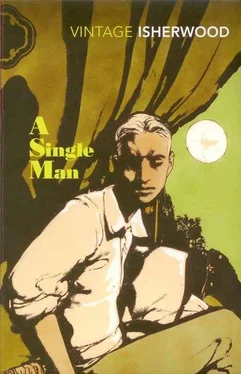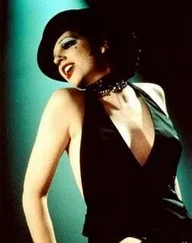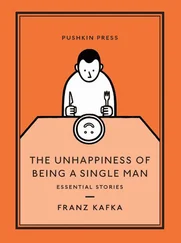No time to worry about that now. In ten minutes they will have arrived on campus. In ten minutes, George will have to be George; the George they have named and will recognise. So now he consciously applies himself to thinking their thoughts, getting into their mood. With the skill of a veteran, he rapidly puts on the psychological makeup for this role he must play.
No sooner have you turned off the freeway on to San Tomas Avenue than you are back in the tacky sleepy slowpoke Los Angeles of the thirties, still convalescent from the depression, with no money to spare for fresh coats of paint. And how charming it is! An up-and-down terrain of steep little hills with white houses of cracked stucco perched insecurely on their sides and tops, it is made to look quaint rather than ugly by the mad hopelessly intertwisted cat’s cradle of wires and telephone poles. Mexicans live here, so there are lots of flowers. Negroes live here, so it is cheerful. George would not care to live here, because they all blast all day long with their radios and television sets. But he would never find himself yelling at their children; because these people are not The Enemy. If they would ever accept George, they might even be allies. They never figure in the Uncle George fantasies.
The San Tomas State College campus is back on the other side of the freeway. You cross over to it by a bridge, back into the nowadays of destruction-reconstruction-destruction. Here the little hills have been trucked away bodily or had their tops sliced off by bulldozers, and the landscape is gashed with raw terraces. Tract upon tract of low-roofed dormitory-dwellings (invariably called homes and described as a new concept in living ) are being opened up as fast as they can be connected with the sewers and the power-lines. It is a slander to say that they are identical; some have brown roofs, some green, and the tiles in their bathrooms come in several different colours. The tracts have their individuality, too – each one has a different name, of the kind that realtors can always be relied on to invent: Sky Acres, Vista Grande, Grovenor Heights ,
The storm-centre of all this grading, shovelling, hauling and hammering is the college campus itself. A clean modern factory, brick and glass and big windows, already three quarters built, is being finished in a hysterical hurry. (The construction-noises are such that, in some classrooms, the professors can hardly be heard.) When the factory is fully operational, it will be able to process twenty thousand graduates. But, in less than ten years, it will have to cope with forty or fifty thousand. So then everything will be torn down again and built up twice as tall.
However, it is arguable that, by that time, the campus will be cut off from the outside world by its own parking lots, which will then form an impenetrable forest of cars abandoned in despair by the students during the week-long traffic jams of the near future. Even now, the lots are half as big as the campus itself and so full that you have to drive around from one to another, in search of a last little space. Today, George is lucky. There is room for him on the lot nearest his classroom. George slips his parking-card into the slot (thereby offering a piece of circumstantial evidence that he is George); the barrier rises in spastic mechanical jerks, and he drives in.
George has been trying to train himself, lately, to recognise his students’ cars. (He is continually starting these self-improvement projects; sometimes it’s memory-training, sometimes a new diet, sometimes just a vow to read some unreadable Hundredth Best Book. He seldom perseveres in any of them for long.) Today he is pleased to be able to spot three cars – not counting the auto-scooter which the Italian exchange-student, with a courage or provincialism bordering on insanity, rides up and down the freeway as though he were on the Via Veneto. There’s the beat-up not-so-white Ford coupe belonging to Tom Kugelman, on the back of which he has printed Slow White . There’s the Chinese Hawaiian boy’s grime-grey Pontiac, with one of those joke-stickers in the rear window: The only ism I believe in is abstract expressionism . The joke isn’t a joke in his particular case, because he really is an abstract painter. (Or is this some super-subtlety?) At all events, it seems incongruous that anyone with such a sweet chessycat smile and cream-smooth skin and cat-clean neatness could produce such gloomy muddy canvases or own such a filthy car. He has the beautiful name of Alexander Mong. And there’s the well-waxed spotless scarlet MG, driven by Buddy Sorensen, the wild watery-eyed albino who is a basketball star and wears a ban the bomb button. George has caught glimpses of Buddy streaking past on the freeway, laughing to himself as if the absurd little sitzbath of a thing had run away with him, and he didn’t care.
So now George has arrived. He is not nervous in the least. As he gets out of his car, he feels an upsurge of energy, of eagerness for the play to begin. And he walks eagerly, with a springy step, along the gravel path past the Music Building towards the Department Office. He is all actor now; an actor on his way up from the dressing-room, hastening through the backstage world of props and lamps and stagehands to make his entrance. A veteran, calm and assured, he pauses for a well-measured moment in the doorway of the office and then, boldly, clearly, with the subtly modulated British intonation which his public demands of him, speaks his opening line, ‘Good morning!’
And the three secretaries – each one of them a charming and accomplished actress in her own chosen style – recognise him instantly, without even a flicker of doubt, and reply ‘Good morning!’ to him. (There is something religious here, like responses in church; a reaffirmation of faith in the basic American dogma, that it is, always, a Good Morning. Good, despite the Russians and their rockets, and all the ills and worries of the flesh. For of course we know, don’t we, that the Russians and the worries are not really real? They can be unthought and made to vanish. And therefore the morning can be made to be good. Very well then, it is good.)
Every teacher in the English Department has his or her pigeon-hole in this office, and all of them are stuffed with papers. What a mania for communication! A notice of the least important committee meeting on the most trivial of subjects will be run off and distributed in hundreds of copies. Everybody is informed of everything. George glances through them all and then tosses the lot into the waste-basket, with one exception: an oblong card slotted and slitted and ciphered by an IBM machine, expressing some poor bastard of a student’s academic identity. Indeed, this card is his identity. Suppose, instead of signing it as requested and returning it to the Personnel Office, George were to tear it up? Instantly, that student would cease to exist, as far as San Tomas State was concerned. He would become academically invisible, and only reappear with the very greatest difficulty, after performing the most elaborate propitiation ceremonies; countless offerings of forms filled out in triplicate and notarised affidavits to the gods of the IBM.
George signs the card, holding it steady with two fingertips. He dislikes even to touch these things, for they are the runes of an idiotic but nevertheless potent and evil magic; the magic of the think-machine gods, whose cult has one dogma, we cannot make a mistake . Their magic consists in this, that whenever they do make a mistake, which is quite often, it is perpetuated and thereby becomes a non-mistake. . . . Carrying the card by its extreme corner, George brings it over to one of the secretaries, who will see that it gets back to Personnel. The secretary has a nail-file on her desk. George picks it up, saying, ‘Let’s see if that old robot’ll know the difference’ and pretends to be about to punch another slit in the card. The girl laughs, but only after a split-second look of sheer terror; and the laugh itself is forced. George has uttered blasphemy.
Читать дальше












